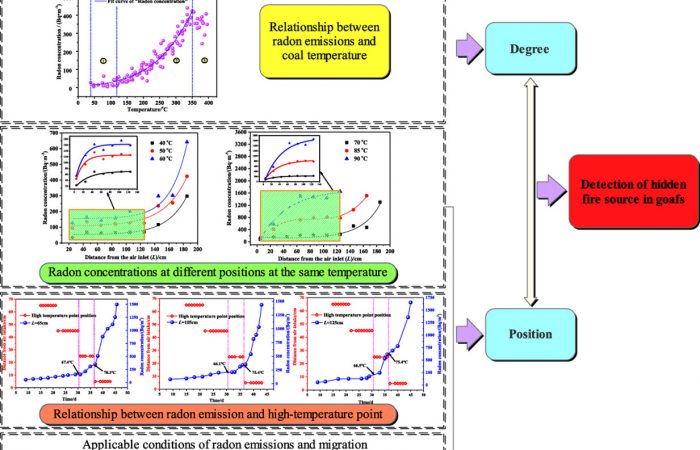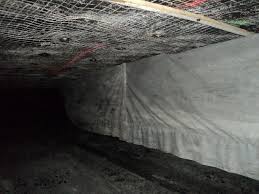
North Goonyella Mine Fire 22nd October. Radon Survey. “Professor Jain Meig via interpretation by Mr Hou explained the preliminary findings of the survey, providing the group with a determined location of the origins of the combustion event including indicated current temperature and temperature at peak of combustion event.” “Although there were points identified with elevated energy readings above the Main headings 53 c/t to 59 c/t, conclusions could not be drawn due to compromised data through moisture in a number survey cups.”
MRE – North Goonyella – 22.10.2018.pdf
I am not familiar with the use of a Radon Survey.
Below is a short explanation and links to a paper about using Radon Surveys at Dartbrook in 2002 and a Paper from 2014 on its use in China.
Apparently Radon Surveys have been successfully used in over 30 Spon Com events if Chinese Coal Mines.
Like most things over the last 2 Months not at North Goonyella, or not in Managements View anyway
Professor Jain Meig via interpretation by Mr Hou explained the preliminary findings of the survey, providing the group with a determined location of the origins of the combustion event including indicated current temperature and temperature at peak of combustion event.
Although there were points identified with elevated energy readings above the Main headings 53 c/t to 59 c/t, conclusions could not be drawn due to compromised data through moisture in a number survey cups.
Principle, operation and application of the radon technique
Radon-222 gas occurs naturally as a decay product of the long-lived uradium-238 that is a common rare element in rock/coal/soil strata.
In the event that spontaneous combustion of coal occurs underground, the radon emanation ratio from coal, and its migration through the overlying coal/rock strata increase significantly. This results in an elevated concentration of radon above where the spontaneous combustion of coal is occurring underground.
The elevated radon concentrations are detected and used to locate the underground area of spontaneous combustion of coal.
This is the basic principle of the radon technique for detecting the location of underground sponcom from surface.
Dartbrook 2002 Paper
Detection of Underground Spontaneous Combustion of Coal With Surf
2014 Chinese Paper
Radon China study energies-07-08483
Presentation — Radon Survey Preliminary Results
Today at 1430hrs I attended a presentation on the preliminary results from the recently conducted
Radon survey above Longwall 9 Goaf.
The presentation was delivered by
Mr Geoff Watson(Study/Project Manager Peabody Aust.), Professor Jian Meig (Shanxi Provence University China.) and Mr Dennis Huo (Gas Drainage Specialist Peabody Aust. (providing language interpretation between Professor Jain Meig and the attendees)).
Other Attendees – John Anger (SSE), Gareth Prichard (Electrical Maintenance Planner), Kris Markowski, (Tech Services), Marek Romenski (UMM), Lee Earnshaw (Development Coordinator), John Pearson (SSHR), Associate Professor Yuguo Wu (Shanxi Provence University China.), Jamie Haantz (Group Director Underground Development Peabody ).
Mr Watson opened the presentation emphasising the following points;
This was the first Radon survey conducted in Queensland and the largest ever conducted in Australia.
The objective of the radon survey is to delineate zones of elevated energy.
There were 6 zones surveyed, 3 above the Longwall 9N Goaf and 3 above the Mains headings.
Professor Jain Meig via interpretation by Mr Hou explained the preliminary findings of the survey, providing the group with a determined location of the origins of the combustion event including indicated current temperature and temperature at peak of combustion event.
Although there were points identified with elevated energy readings above the Main headings 53 c/t to 59 c/t, conclusions could not be drawn due to compromised data through moisture in a number survey cups.
After general discussion the meeting concluded at 1520hrs.


